L5 Autonomic pharmacology: cholinergic and anti cholinergic drugs
一、Human Nervous System
- Controls and coordinates functions throughout the body
- Nervous System
- Central Nervous System (Brain, Spinal cord)
- Peripheral Nervous System (cranial (颅) + spinal nerves + sense organs)
- Somatic (regulates activities under voluntary control)
- Autonomic (regulates activities under involuntary control)
Organization of nervous system
Nervous network
- Peripheral nervous system(PNS)
- Autonomic nervous system(ANS): ANS: not directly under conscious control
- (sympathetic and parasympathetic)
- Somatic nervous system: Somatic :under conscious control (movement)
- Autonomic nervous system(ANS): ANS: not directly under conscious control
- Central nervous system (CNS)
Chemical transmission (neurotransmitters: cholinergic and adrenergic)
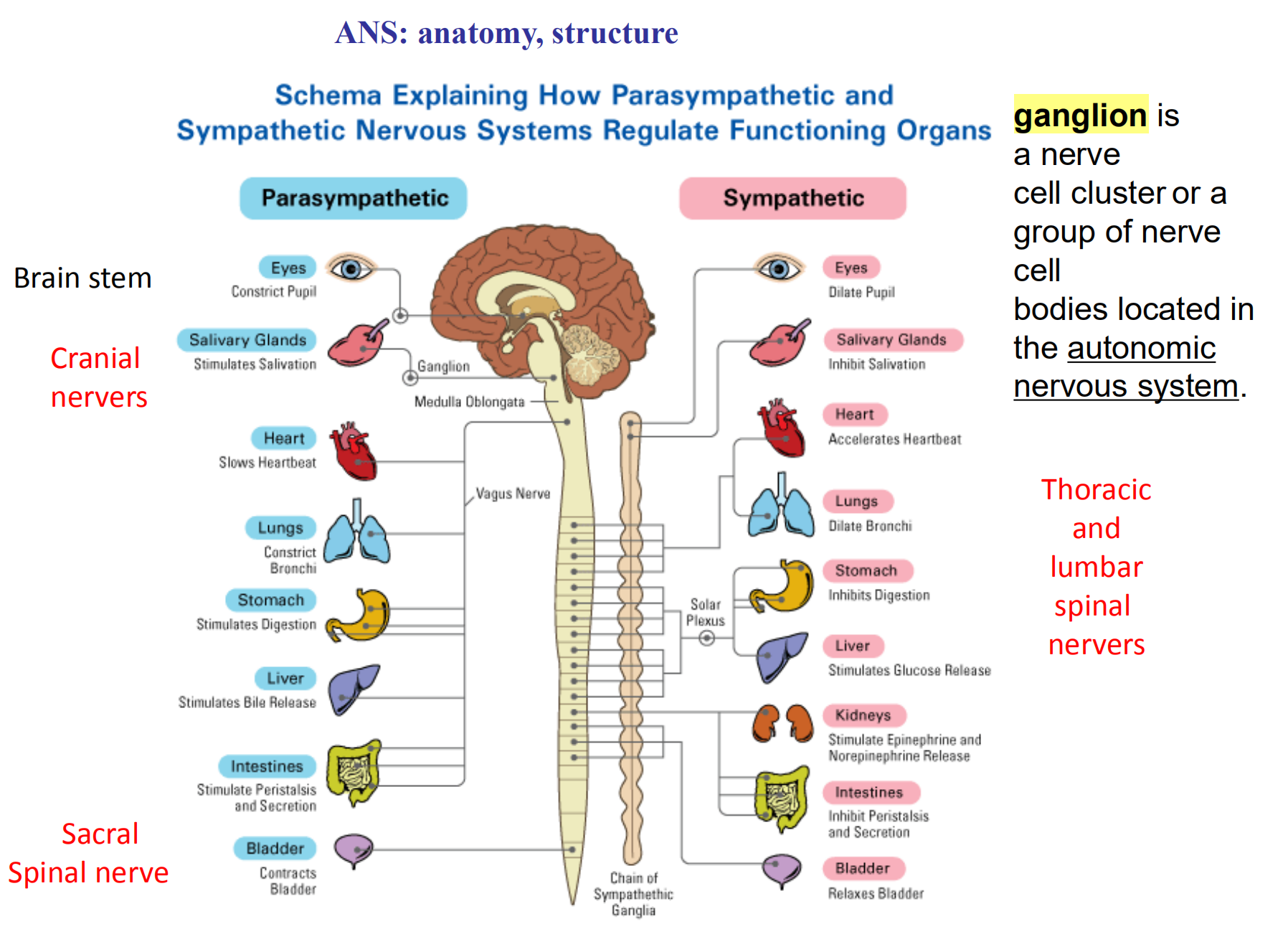
- ganglion is a nerve cell cluster or a group of nerve cell bodies located in the autonomic nervous system
1. More details on ANS
The autonomic nervous system (ANS) is a division of the peripheral nervous system that influences the function of internal organs
a control system that acts largely unconsciously and regulates bodily functions such as the heart rate, digestion, respiratory rate, pupillary response, urination, and sexual arousal.
The sympathetic nervous system: the “fight or flight“ system; “quick response mobilizing system“
The parasympathetic nervous: the “rest and digest“ or “feed and breed” system; “more slowly activated dampening system“
ANS often work in conjunction with SNS which provides voluntary control
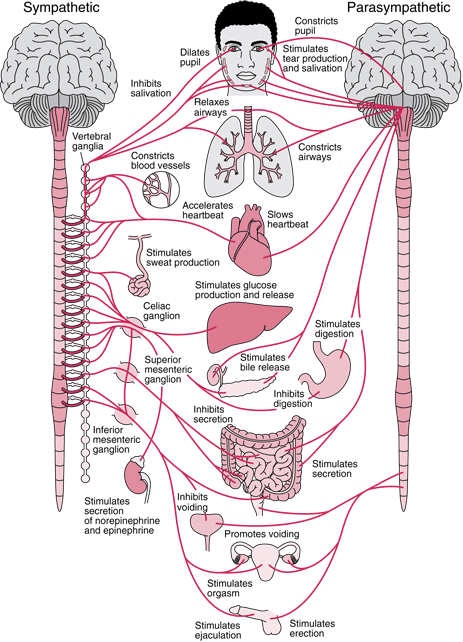
- ganglion is a nerve cell cluster or a group of nerve cell bodies located in the autonomic nervous system
- Sympathetic and parasympatheic are anotomic designations: independent of types of transmitter chemicals, or the kind of effect evoked by nerve activity (excitatory vs inhibitory)
- parasympathetic system does not have extra ganglions
- Ganglions are mainly used by sympathetic systems
ANS: Neurotransmitter &receptors

- Parasympathetic: Always use Ach as neurotransmitter
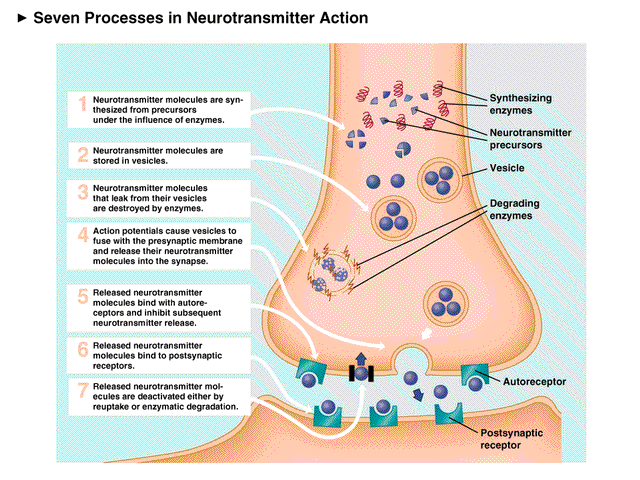
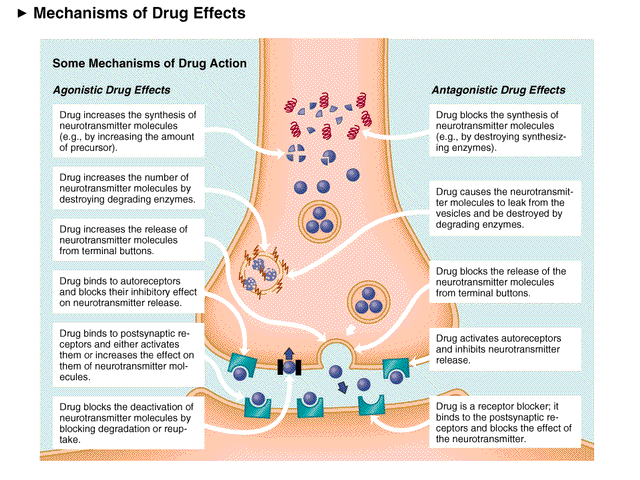

二、Neurotransmitters
Receptors
Classification of neurotransmitter receptors of ANS
- Cholinoceptors
- Adrenoceptors
- Dopamine receptors
Mechanisms of action
- G-protein-coupled receptor(GPCR)
- ligand-gated ion channels (Nicotic)
1. GPCR and G protein

2. Ligand-Gated Channels
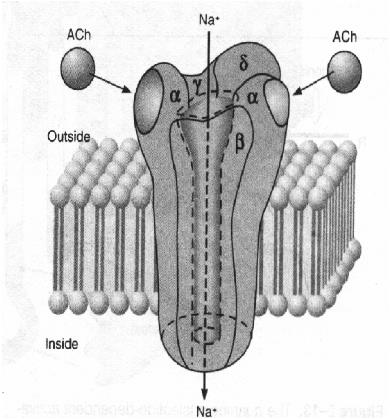
- The nicotinic acetylcholine receptor
The open of channel results in the flow of ion and thereby alters the electrical potential across the membrane
The natural ligands including N-acetylcholine, excitatory amino acids (glycine, glutamate, etc), γ-GABA (Cl-, chlorine)
All of these agents are synaptic transmitters
3. Acetylcholine receptor
Muscarinic acetylcholine receptors
- M1 M2 M3 M4 M5
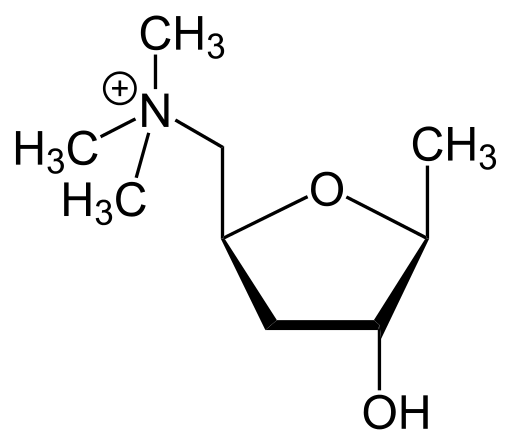
Nicotinic acetylcholine receptors
- N1 N2
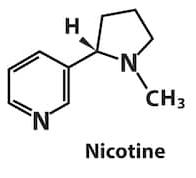
M1,M3,M5– Gq protein to induce IP3 and DAG
M2,M4- Gi protein to inhibit cAMP, opening K+ channel
N receptor: ion-channel, opening Na+ channel depolarization
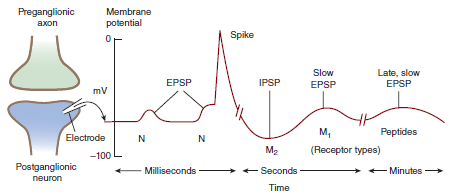
Muscarinic acetylcholine receptors(mAChR,M1,3,5)

- Location: CNS, stomach, salivary gland et al.
Muscarinic acetylcholine receptors(M2,4)
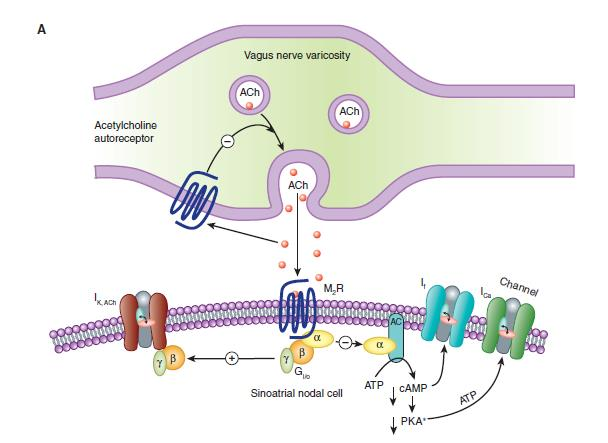
- Location: heart, gastrointestinal(GI) smooth muscle, CNS
Nicotinic acetylcholine receptors (nAChR,N-R)
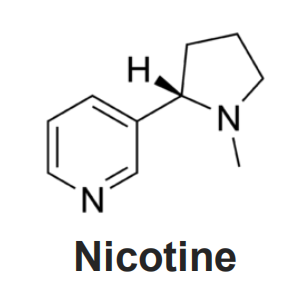
- ligand-gated ion channel, 5 subunits
- 16 different subunits: α(9)/β(4)/γ/δ/ε
- nAChR: 3 main types—muscle type/ganglion type/CNS type
- mostly in the central nervous system , except:
- transmit outgoing signals from the presynaptic to the postsynaptic cells within the sympathetic and parasympathetic nervous system,
- found on skeletal muscle that receive acetylcholine released to signal for muscular contraction.
- mostly in the central nervous system , except:
Nicotinic acetylcholine receptors(N-R)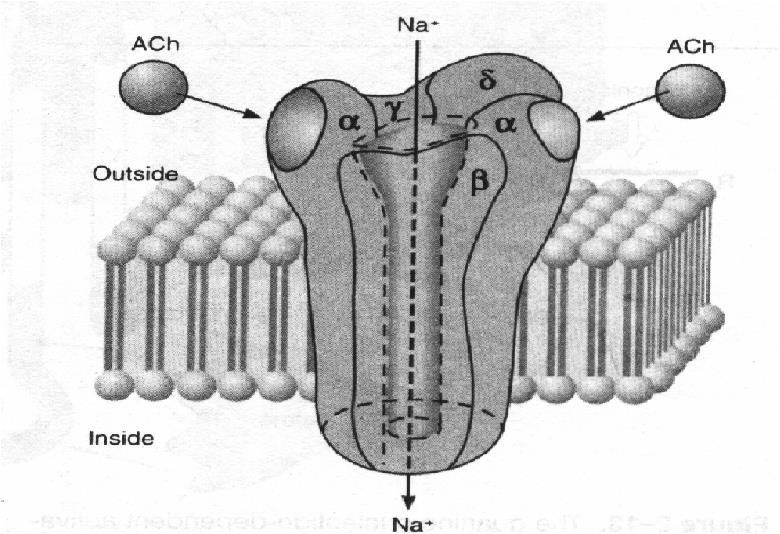
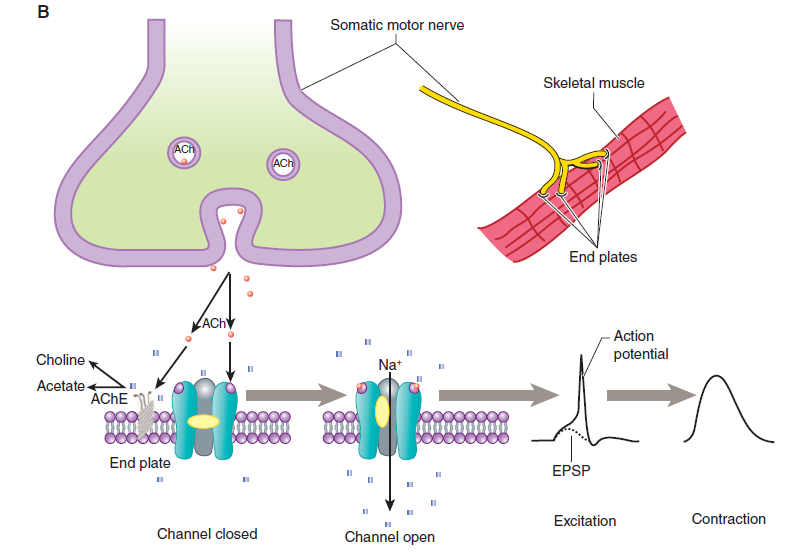
Receptors & locations

Direct effect of autonomic nerve activity on some organ systems
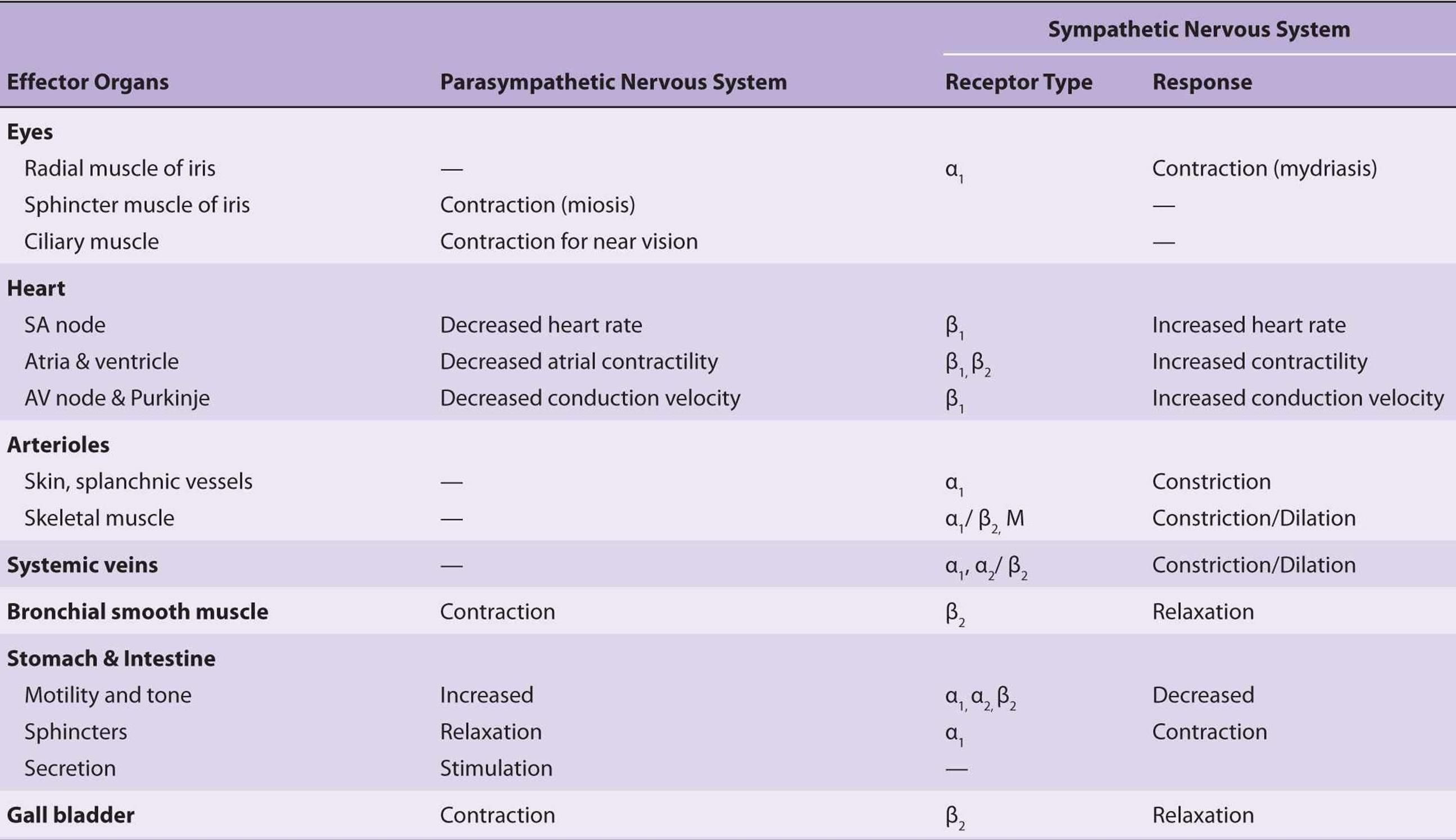
- Receptor type in parasympathetic system: all muscarinic acetylcholine receptor
acetylcholine(Ach)
Cholinergic fibers
- All preganglionic autonomic fibres
- All postganglionic parasympathetic fibres
- A small number of postganglionic sympathetic fibres

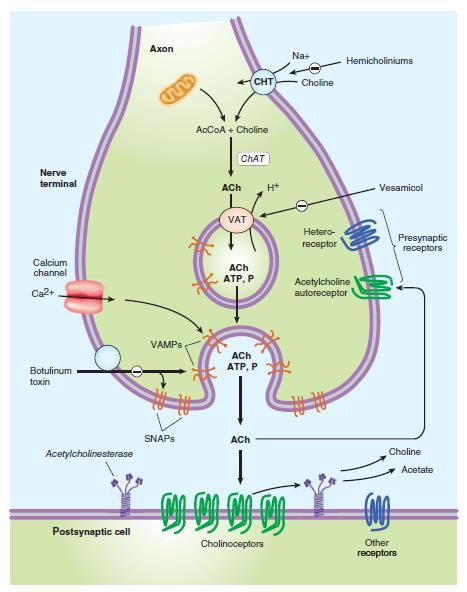
- VAT: vesicle-associate transporter
- VAMP: vesicle-associated membrane proteins
- SNAP: synaptosomal nerve-associated proteins
1. Cholinoceptor-activating drugs
Objectives
- To know classification of cholinoceptor-activating and cholinesterase-inhibiting drugs, chemical structures and mechanism of action
- To understand major pharmacological effects and therapeutic applications
- To understand major adverse reactions
Cholinergic nerves and receptors
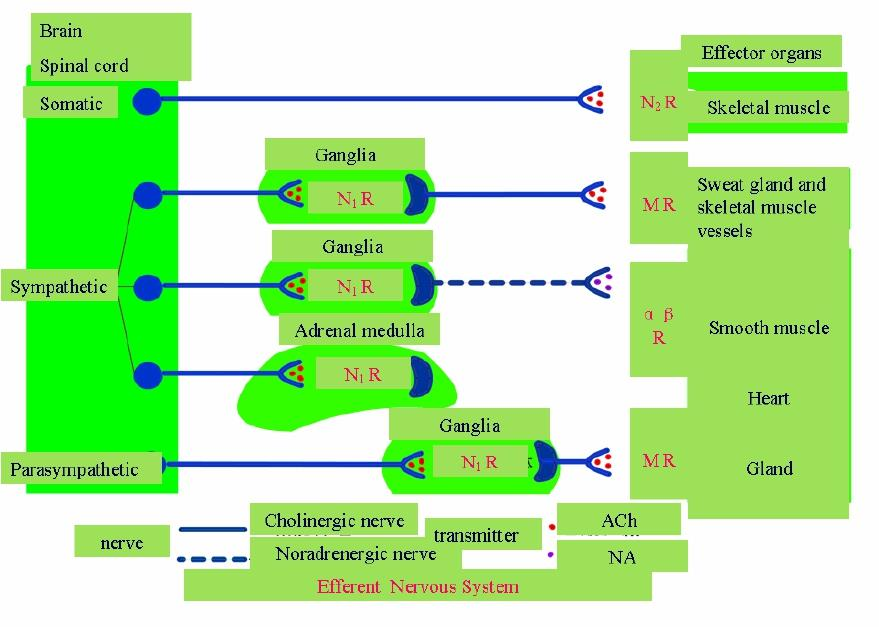
Classification of drugs
Cholinomimetic agents
- Cholinoceptor-activating(direct)
- Cholinesterase inhibitors(indirect)
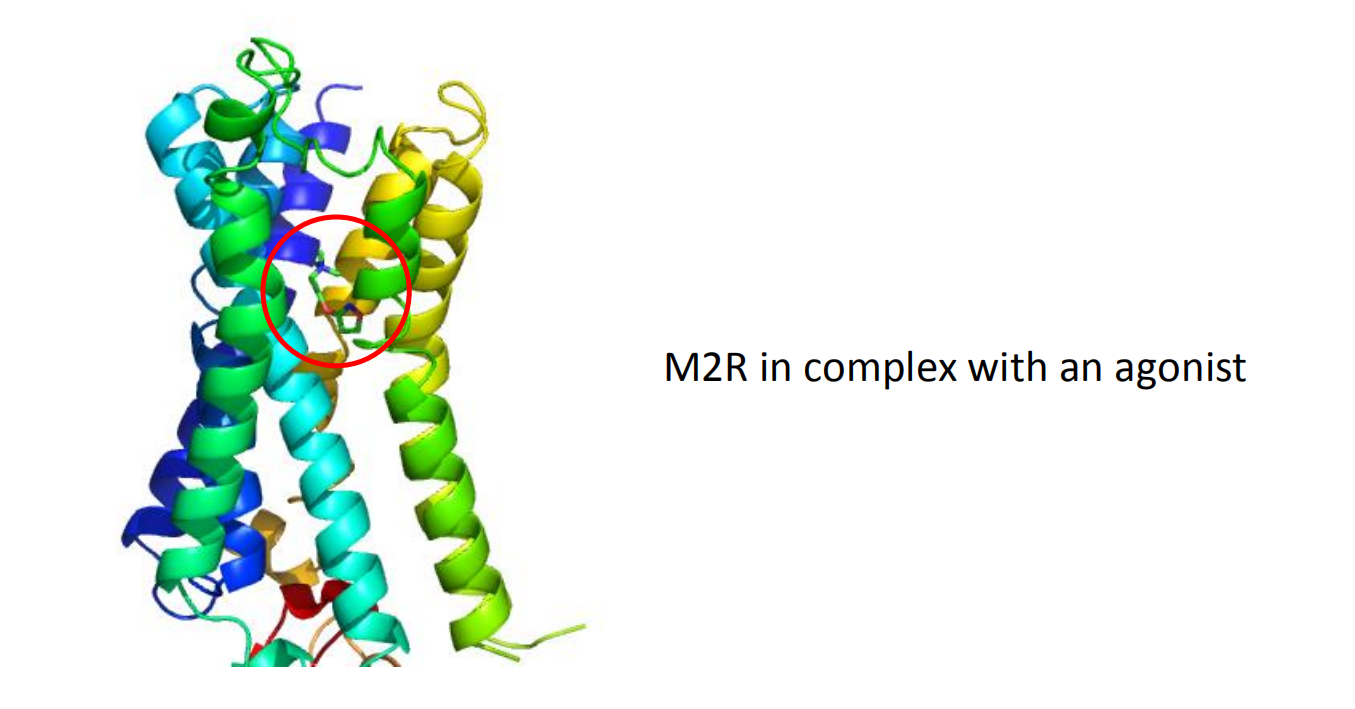
The direct-acting drugs
(1) Chemistry & pharmacokinetics
- Chemical structures:
- Esters of choline: acetylcholine. methacholine, carbacholine…
- Alkaloids: muscarine, nicotine
- M,N receptor agonists: acetylcholine, carbacholine
- M receptor agonists: pilocarpine

- Alkaloid, any of a class of naturally occurring organic nitrogen-containing bases.
(2) Absorption, distribution, Metabolism
Choline esters: poorly absorbed, poor in CNS-hydrophlic
- poorly absorbed: the molecules are polar and charged, hard to pass through the cell membrane
Alkaloids: easy to absorbed, nicotine> muscarine –neurotoxic (mushrooms)
(3) Pharmacological effects
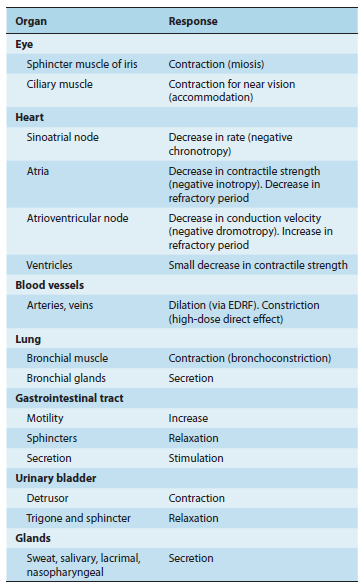
Eyes
- miosis (瞳孔过小) (M3-R)
- reduced intraocular pressure (secondary effect)
- accommodation spasm (M3-R)

Miscellaneous secretary glands (M3-R)
- Miscellaneous secretary glands (M3-R)
Respiratory system
- contract smooth muscle in bronchial tree (M3-R→Ca2+)
- stimulate secretion of tracheobronchial mucosa (M3-R→Ca2+)

Cardiovascular system mainly Reduces heart rate (M2)

- Increase potassium ion concentration
- atrial muscle
- sinoatrial muscle
- atrioventricular nodes
- decrease hyperpolarization-activated current
- slow inward calcium current

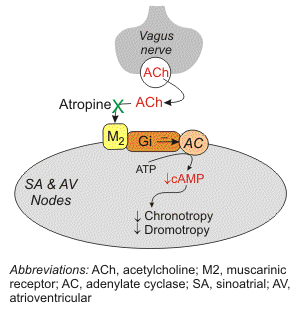
Vasodilation and blood pressure

M3 R in endothelial cells → relax smooth muscle
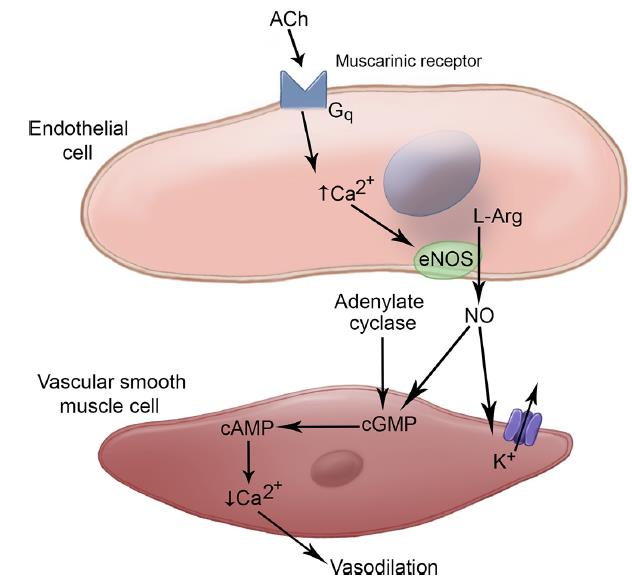
Gastrointestinal(GI) tract

- Secretion of salivary(M3-R), gastric(M1-R), gut glands(M3-R)
- Motility of GI smooth muscle(M3-R)
- Sphincters of GI → relaxation
Genitourinary tract (M3-R)
- Contraction of detrusor urinary + Relaxation of trigone and sphincter muscles of the bladder
- To promote voiding
- Uterus is less sensitive to M-receptor agonists
(4) Clinical uses
Stomach, bowel, urine retention: (bethanechol)
Salivary secretion: (pilocaine)
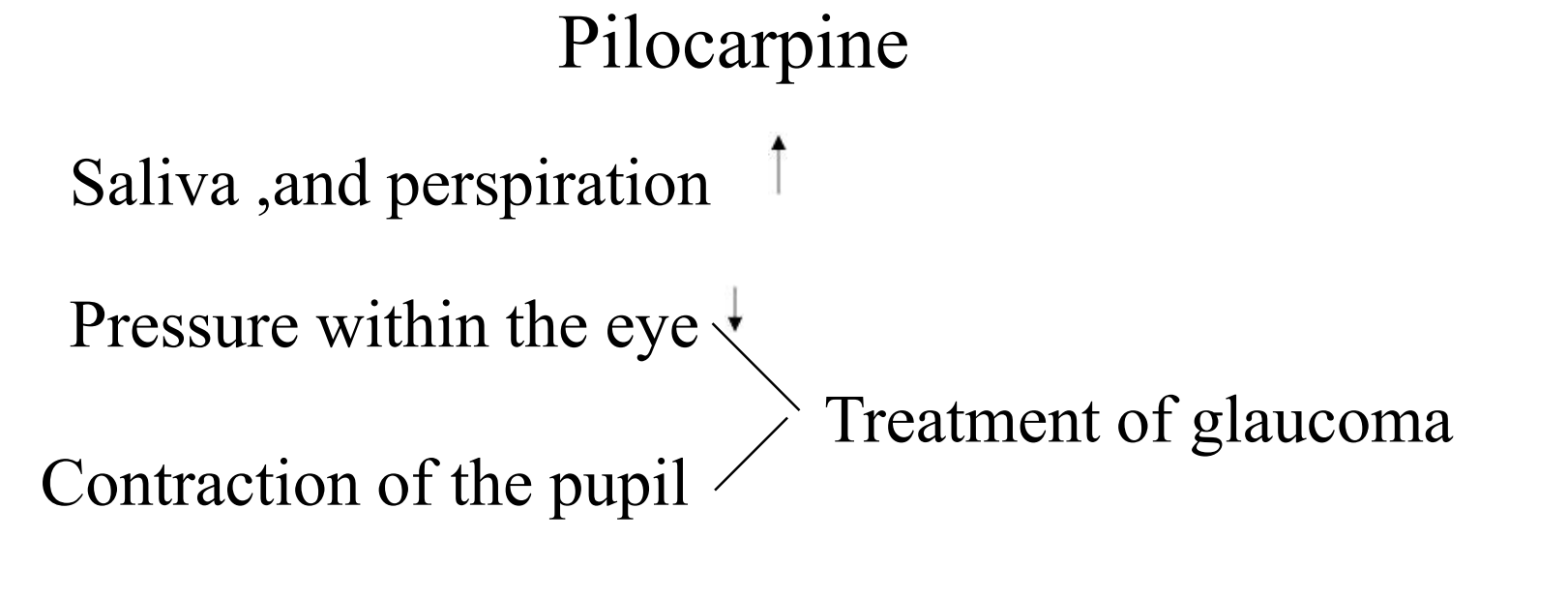
2. The indirect-acting drugs
(anticholinesterase agents ,such as neostigmine, physostigmine)
- Quanternary ammonium group
- 2.carbamic acid
- organophosphates
3. Cholinesterase inhibitors
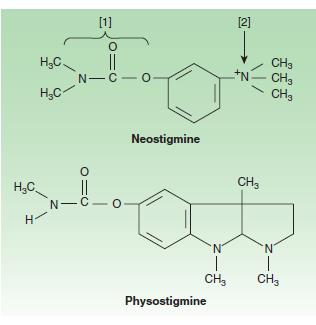
(anticholinesterase agents ,such as neostigmine, physostigmine)
Organophosphate-based choplinesterase inhibitors

- Well absorbed
- Causing skeletal muscle paralysis in miniutes

Cholinesterase: mechanism of action

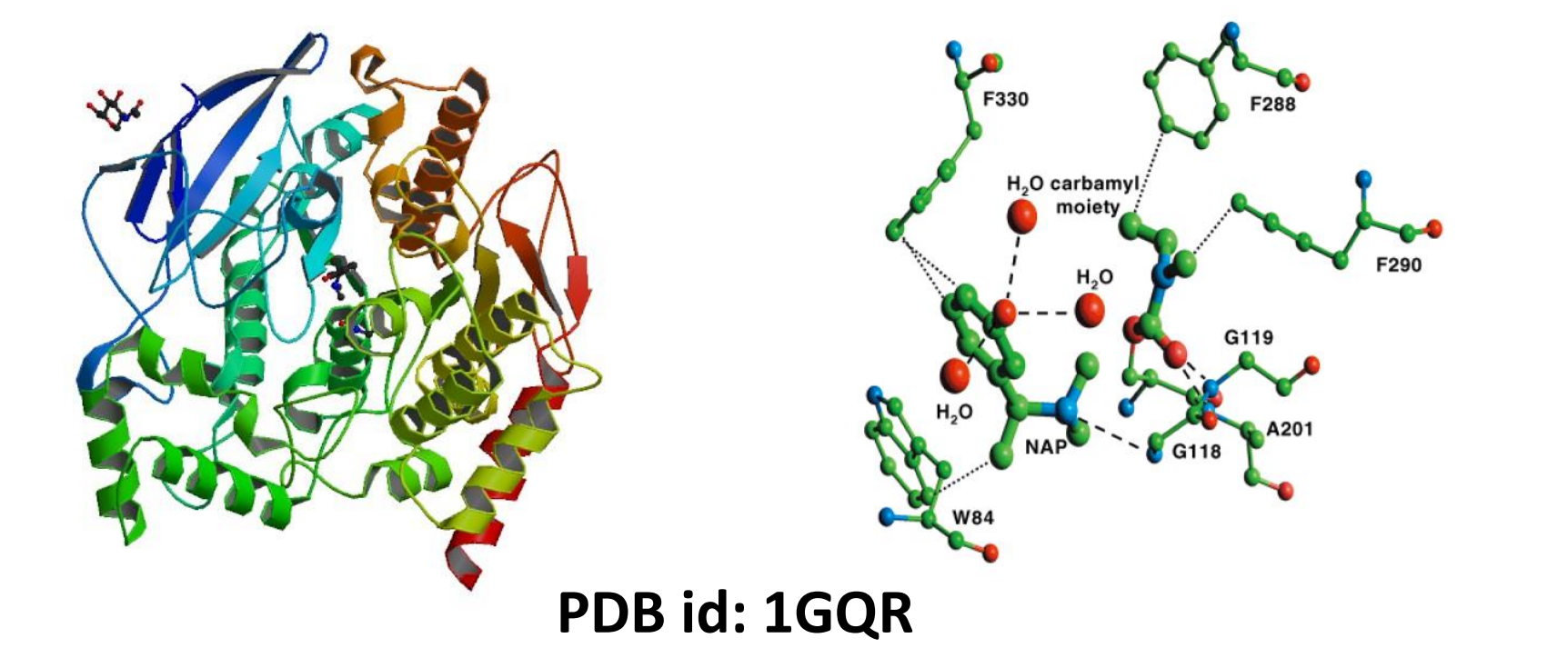
4. Pharmacodynamics
Mechanisms of Action
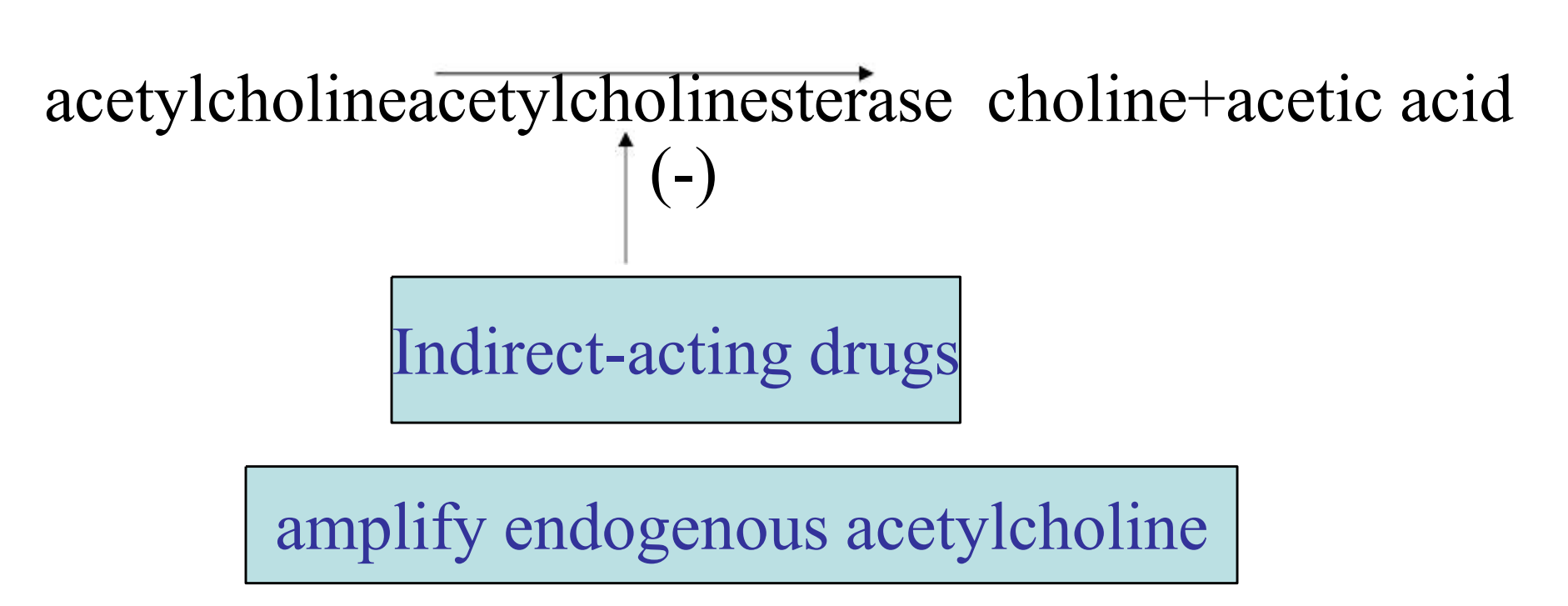
Pharmacological actions
Similar to that of the direct-acting drugs on the eye, the cardiovascular and gastrointestinal systems, and the skeletal muscle neuromuscular junction
antimuscarinic drug intoxication
- Physostigamine (counteracting atropine and tricyclic antidepressants)
glaucoma
- physostigamine

5. Cholinoceptor-blocking drugs
Classification of drugs
Anticholinergic Drugs
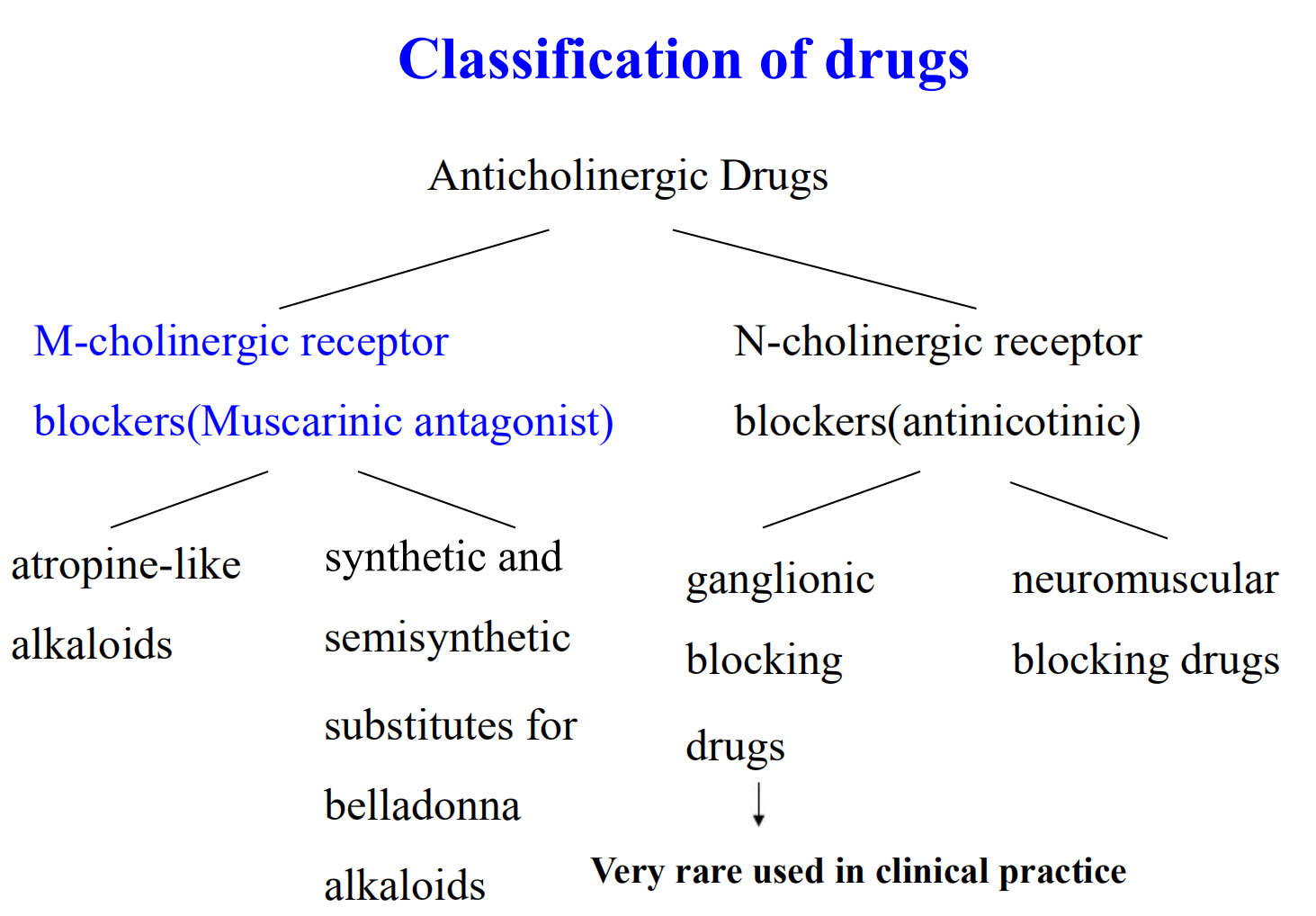
- M-cholinergic receptor blockers(Muscarinic antagonist)
- atropine-like alkaloids
- synthetic and semisynthetic substitutes for belladonna alkaloids
- N-cholinergic receptor blockers (antinicotinic)
- neuromuscular blocking drugs
- ganglionic blocking drugs
- Very rare used in clinical practice
For Atropine
Mechanism of action
- Competitively antagonize M-R mediated effects of Ach. High selective drug for M receptors
- Therefore the atropine increase heart rate and relax the lung.
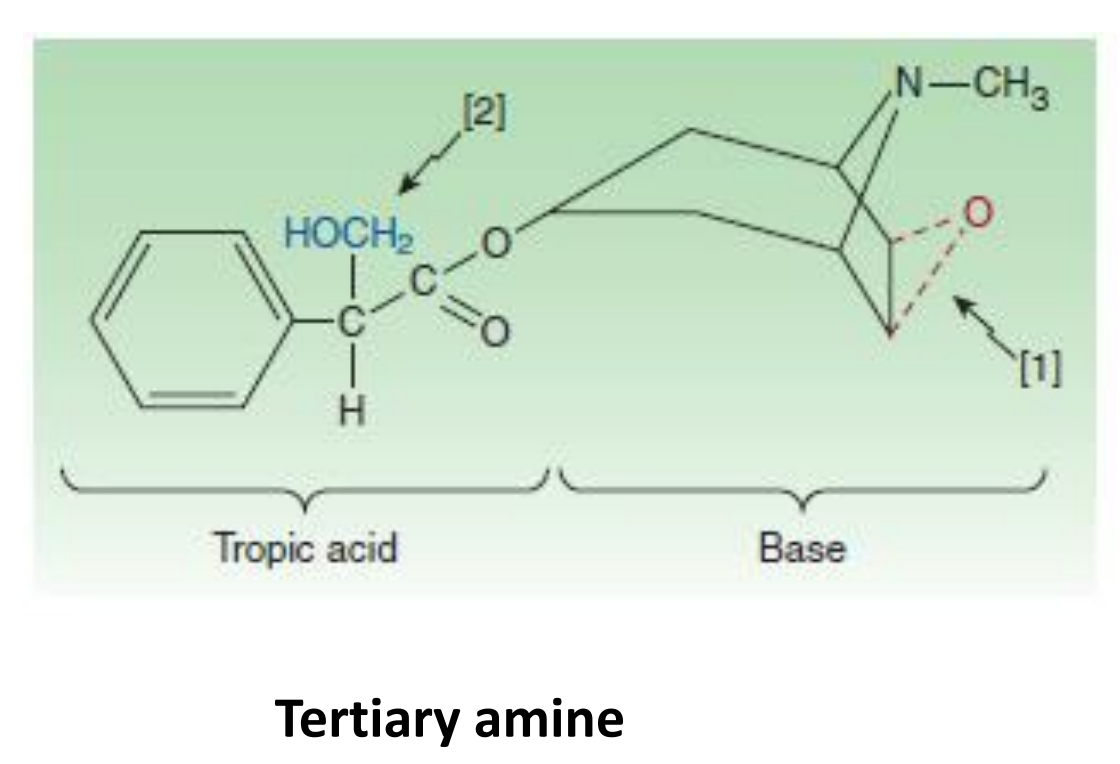
Usage
- Mushroom poisoning: muscarine and other alkaloids
- Insecticides poisoning: cholinesteras inhibitor → excess acetylcholine